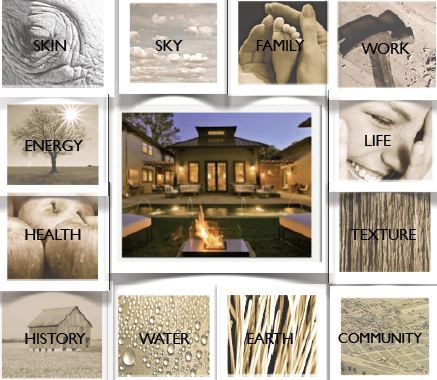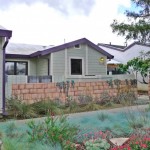Ever wonder how long we’ve been trying to define “Green Building?” I first heard the term in 2005 and thought, as a residential contractor, I should probably explore the concept, just in case a homeowner had some interest. What I thought could be a passing fad has redefined my business model.
Yet it’s been a struggle over the years to get the various parties involved in the construction process to agree on what it takes to create a “Green” building. Homeowners, architects, designers, building officials, suppliers and product manufacturers all seem to have their own ideas. Some of these ideas are based on a real desire to improve our built environment and the quality of life for the people in those buildings. Others are snake oil from people trying to make a quick buck.
Of course, that’s true in all walks of life.
To make green building concepts more accessible, various organizations across the nation have developed checklists to ease the way. LEED (Leadership in Energy and Environmental Design, begun in 2000 by the US Green Building Council, was out front early with strategies for non-residential buildings. Build It Green, established in 2005 here in the bay area, compiled an action plan for residential buildings that has been adopted by many municipalities throughout California. Individual jurisdictions have even developed and adopted their own green building requirements.
These various approaches, though well intended, have proven to be a little confusing, as well as intimidating, to many consumers. Each has their proponents, as well as detractors, but their frameworks are similar:
• A menu of items considered environmentally responsible is offered to the consumer (high efficiency toilets, no VOC paints, recycled materials, etc.).
• These items are compiled under various broad categories (i.e. energy efficiency, resource conservation, indoor air quality, etc.).
• The consumer chooses which items best suit their project.
• Points are awarded for those selections.
• Higher levels of point accumulation may warrant recognition, such as silver, gold, or platinum awards. Kind of like the Olympics.
The whole process can be exhausting.
Unfortunately, too often these systems have lead consumers to believe the more points they achieve, the greener their building becomes, which may not be true. Rather than considering how to best achieve their goals for the building, they chase points and the associated awards, which may not be the wisest investment.
Many of us are proposing a different approach altogether. We want to design and construct green buildings based upon clear, well-defined objectives, rather than a potpourri of options. What are those well-defined objectives? It’s four simple things.
1) (and always first) The building should be safe and healthy for the occupants. Every design criteria and material selection should make this consideration tantamount. No building is green that undermines the health and safety of the people in it.
2) The building should be durable. I think the argument can be made that the longer the building lasts (while continuing to be healthy and safe), the greener it is. We’ve phrased it in various ways, such as building for seven generations, or cradle to cradle, but whatever the current catch phrase may be, we must construct these buildings to last.
3) We have to control our construction and demolition waste stream. The construction industry has an abominable record in this regard. Though in the all too recent past we’ve been responsible for over half of the material that ended up in municipal landfills, we’re improving. No more landfills are going to be constructed, and we can never really throw anything away, anyway. Besides, it saves construction costs to reduce the waste stream. Reduce, reuse, repurpose, and recycle, always in that order.
4) Our buildings must be more resource efficient. That means less consumption, for the life of the building, of water, gas, and electricity. Resource efficient buildings cost less to operate and maintain, and, oddly enough, are more comfortable. If we prioritize efficiency first, we can reduce the need for alternative energy sources, as well as our current consumption of fossil fuels. Should be a no-brainer.
These four steps will achieve the goals all of the various programs are trying to accomplish, anyway. Why not first design the building around these basic concepts, and then determine the number of points available? Four simple guidelines to a more sustainable built environment for you and your family.
Like my grandma used to say, “Easy peasy, miss Breezy.”
 AUTHOR: Ron Jones is Owner/CEO of Sustainable Home Solutions, a Home Performance/Residential Remodeling company located in Santa Cruz, CA. BPI certified as a Building Analyst and Envelope Professional, his building science based approach, as well as understanding of how the house works as a system, insures his clients get the safe, comfortable, durable, and resource efficient home they, and their families, deserve.
AUTHOR: Ron Jones is Owner/CEO of Sustainable Home Solutions, a Home Performance/Residential Remodeling company located in Santa Cruz, CA. BPI certified as a Building Analyst and Envelope Professional, his building science based approach, as well as understanding of how the house works as a system, insures his clients get the safe, comfortable, durable, and resource efficient home they, and their families, deserve.

 City from Heaven with Pollution from Hell
City from Heaven with Pollution from Hell Frank Schiavo Solar Home’s Legacy to San Jose
Frank Schiavo Solar Home’s Legacy to San Jose Can Renting a Hybrid be a Much Better Deal than Driving Your Own Car?
Can Renting a Hybrid be a Much Better Deal than Driving Your Own Car?